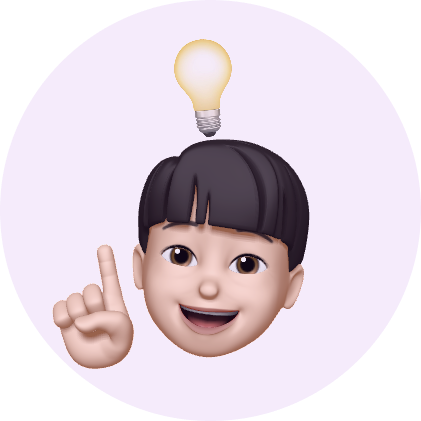프로젝트를 설계할 때는 알림 시스템을 간단하게 생각하고 설계했었다. 하지만 알림을 구현하기 시작하면서 재 설계의 필요성을 느꼈다.
알림 시스템의 요구사항
알림 템플릿
먼저 알림 시스템의 템플릿을 알아보자.
1
2
배송이 시작되었습니다. [알림 메세지]
https://mypage [연관된 페이지]
알림 형태
| 수신자 | 전송 방법 |
|---|---|
| 시스템 관리자 | SSE |
| 가게 사장 | SSE |
| 구매자 | SSE, SMS |
알림 전송 방법은 SSE와 문자 메세지를 이용한다. SSE와 문자 메세지의 템플릿을 통일해서 알림 데이터를 다루기 쉽도록 구성했다.
알림 기본 프로세스
- 액터(구매자, 가게 사장, 시스템 관리자)에 의해 micro service에서 특정 동작이 수행된다.
- micro service에서 동작 완료 후 특정 조건을 만족하면 이벤트를 발생 시킨다.
- AWS SQS 로 메세지를 publish 하게 된다.
- notification service 의 특정 SQS listener가 메세지를 polling 한다.
- 알림을 전달할 사용자의 Role에 따라 SSE, SMS를 전송하고 알림 정보를 mysql 데이터베이스에 저장한다. 전체적인 프로세스이다. 특정 이벤트에 대해서는 SNS를 사용하여 여러 SQS가 이벤트를 받는 경우가 발생할 수 있다.
알림 이벤트 전달 객체 설계
알림은 여러 micro service에서 발생한 이벤트에 의해 전송된다. 주문 생성, 배송 시작, 문의 등록, 답변 등록 등 사용자에게 즉시 상태 변화를 알려줄 수 있어야 한다. 또한 여러 micro service에서 알림 정보를 notification service에 전달하기 때문에 알림 정보를 전달하는 코드는 통일성을 가지면 좋다.
notification data
1
2
3
4
5
6
7
8
9
10
11
12
...
public class NotificationData<T> {
@JsonProperty private T whoToNotify;
private PublishNotificationInformation publishInformation;
public static <T> NotificationData<T> notifyData(
T data, PublishNotificationInformation publishInformation) {
return NotificationData.<T>builder()
.whoToNotify(data)
.publishInformation(publishInformation)
.build();
}
위 코드는 micro service에서 SQS에 publish 할 데이터를 받는 클래스이다. whoToNotify는 타입 T를 부여해 데이터의 형태에 제약을 두지 않았다. 알림 전달을 한번에 여러명에게 할 수도 있고, 한명에게만 전달할 수도 있다. 또한 알림 형태에 따라 요구되는 속성이 다를 수 있다. 각 micro service 에서 notify()메서드를 호출하여 누구에게 전달할지, 알림 정보는 어떤 것인지를 넣어 SQS에 메세지를 전송하게 된다.
SQS Listener
1
2
3
4
5
6
7
8
9
10
11
12
13
@SqsListener(
value = "${cloud.aws.sqs.question-register-notification-queue.name}",
deletionPolicy = SqsMessageDeletionPolicy.NEVER)
public void consumeQuestionRegisterNotificationQueue(
@Payload String message, @Headers Map<String, String> headers, Acknowledgment ack)
throws JsonProcessingException {
NotificationData<ClassName> questionRegisterNotification =
objectMapper.readValue(message, ClassName.class);
...
notificationActionHelper.publishQuestionRegisterNotification(notification);
ack.acknowledge();
}
sqs listener는 위와 같다. spring-cloud-aws-messaging 패키지에 있는 SqsListener를 사용해 SQS 메세지를 polling하게 된다. message 파라미터로 publish된 메세지를 받아오고 objectMapper를 이용해 객체를 변환한다. 메세지를 받은 후 SSE, SMS 전송과 알림 정보를 데이터베이스에 저장하는 동작을 진행한다.
메세지 전송하기
이 프로젝트에서는 구매자에게는 SSE, SMS를 전송하고 가게 사장과 시스템 관리자에게는 SSE를 전송한다. SSE와 SMS로 전달되는 데이터는 동일했기 때문에 publish 메서드를 가진 인터페이스를 두고 SendSMS, SendSSE 클래스가 상속받는 방법을 사용했다.
1
2
3
4
// interface
public interface InfrastructureActionHandler<T extends NotificationCommand.NotificationInformation> {
void publishCustomer(T notifyData);
}
1
2
3
4
5
6
7
8
9
10
11
12
13
14
15
// SendSMS
public class SendSMS implements InfrastructureActionHandler<NotificationInformation> {
...
@Override
public void publishCustomer(NotificationInformation notifyData) {
SnsClient snsClient = awsConfiguration.snsClient();
try {
setSMSAttribute(snsClient);
PublishRequest publishRequest = makePublishRequest(notifyData);
PublishResponse response = snsClient.publish(publishRequest);
log.info(response.messageId() + " message sent " + response.sdkHttpResponse().statusCode());
} catch (SnsException e) {
log.error("재입고 알림 메세지 전송 실패");
}
}
1
2
3
4
5
6
7
8
9
// SendSSE
public class SendSSE implements InfrastructureActionHandler<NotificationInformation> {
private final SseService sseService;
@Override
public void publishCustomer(NotificationInformation notifyData) {
sseService.notify(notifyData);
}
}
SSE와 SMS 모두 NotificationInformation 객체를 받아 알림을 전송한다. SQS에서 받아오는 객체 형태는 달라도 동일한 알림 객체를 만들 수 있도록 구성했다.
SQS에서 메세지 받은 후 동작 구성하기
SQS에서 메세지를 polling 하게되면 SMS, SSE 전송 후 데이터베이스에 알림 정보를 저장하게된다. 구매자에게 배송 상태 정보를 알려주는 동작을 알아본다.
1
2
3
4
5
6
7
8
9
10
11
12
public void publishDeliveryStartNotification(
NotificationData<DeliveryNotification> notificationData) {
NotificationInformation notifyData =
NotificationInformation.getDeliveryNotificationData(notificationData);
sse.publishCustomer(notifyData);
sms.publishCustomer(notifyData);
// save notification
notificationCommandService.saveSingleNotification(
notificationData.getPublishInformation(), notificationData.getWhoToNotify().getUserId());
}
메세지로부터 받은 데이터를 NotificationInformation 객체로 변환하여 SSE와 SMS를 보내고 알림을 저장한다. notificationActionHelper를 사용한 이유는 보통 service 계층에서 데이터 저장과 업데이트 시 @Transactional을 사용하여 하나의 트랜잭션으로 묶고 실패 시 롤백을 한다. service계층에서 SSE, SMS 전송은 트랜잭션에 묶고 싶지 않아 Helper 클래스를 사용하게 되었다.
알림 정보를 저장하는 메서드 또한 saveSingleNotification() 을 통해 저장할 수 있도록 구성했다.
1
2
3
public void saveSingleNotification(PublishNotificationInformation publishInformation, Long id) {
notificationJpaRepository.save(getNotification(publishInformation, id));
}
해당 메서드를 가지고 있는 NotificationCommandService 클래스에 @Transactional을 붙여 저장시 트랜잭션 처리를 한다.
배송 상태 변경 알림 서비스
이 프로젝트의 알림 중 배송 상태 변경 알림 프로세스이다. 가게 사장이 배송 상태 변경(시작, 완료) 버튼을 누르는 것을 트리거로 구매자에게 알림이 전송되는 시점 까지의 프로세스이다.
알림 시스템을 설계하며 SQS를 사용하고, 이벤트의 중복 처리에 대해 고민하여 메세지 polling 후 특정 동작을 실패하여 ack 처리를 하지 못해 다시 메세지를 받는 경우 문자나 SSE를 한번만 전송할 수 있는 멱등한 알림 시스템을 구성하는 것이 좋을것 같다.
